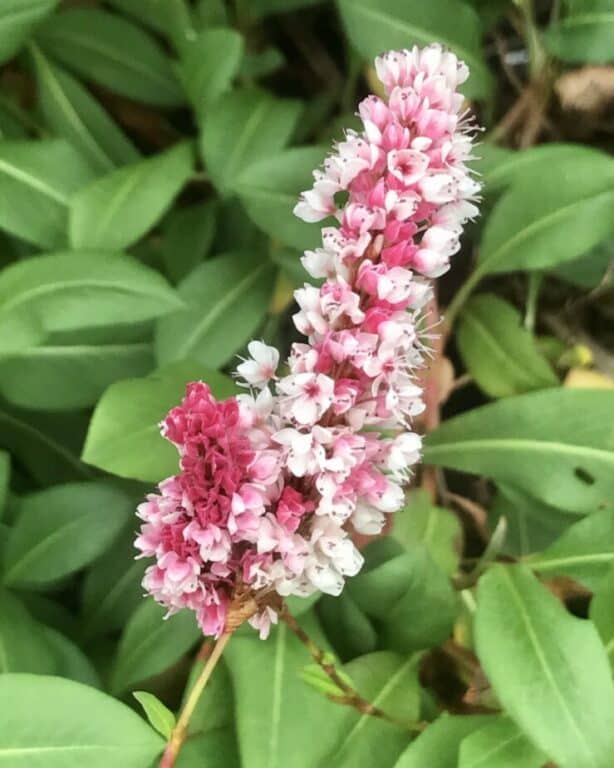This post may contain affiliate links. If you use these links to buy something we may earn a commission. Thanks.
Wet clay and shade combined make for a difficult growing environment and only for the hardiest of plants. The good news is, many of these hardy plants are beautiful, edible, and very diverse in colors and textures.
Most are hardy to a wide range of growing zones, so a lot of room to play for design, colors, or general diversity is ahead.
I’ve made it my mission in this post to ensure all these plants can either grow in full or semi-shade and can definitely tolerate or thrive in wet conditions. Other choices you may see outside this post, may not actually do well in wet conditions.
Before planting any of these options check with your local invasive plant council or regional extension office for guidance on plants that may be invasive in your area.
When making your plant list, ensure each choice will be suitable for your further needs. Leave me a comment if you’d think specific information would be helpful to include for each plant. Or I’d even love to hear about what you’ll pick for planting!
Related: 27 Easy Ground Covers For Clay Soil (Sorted Choices)
Cardinal Flower

Cardinal flowers (Lobelia cardinalis) can grow in semi-shaded areas. They grow well in clay and heavy clay soils. They prefer to have moist or wet feet and can even grow in water.
Lobelia can be planted in zones 3-9 as a perennial and blooms from July to August. during that time they attract butterflies, moths, and hummingbirds. People grow cardinal flowers because hummingbirds can’t resist!
Golden sedge

Golden sedge (Carex aurea) is primarily used as an ornamental grass. If you have space to fill, they thrive in partial shade and can tolerate heavy shade. They can grow well in clay soil and tolerate heavy clay soils and moderately wet conditions.
In general, the golden sedge is low maintenance and grows in zones 5-8. People grow golden sedges because they’re easy and brighten up shady places.
Siberian bugloss

Siberian bugloss (Brunnera macrophylla) is nearly a perfect match. They prefer shade and don’t tolerate dry soils because they need consistent moisture. They do prefer drainage but can tolerate wet periods.
They are low maintenance and stand 1-2 feet in height, and tend to spread 2-3 feet wide by rhizomes. You can grow Siberian bugloss in zones 3-8. They will bloom between April and July— attracting plenty of bees to the garden.
People grow Siberian bugloss for its stunning foliage and shade-loving nature.
Bistort
Bistort (Bistorta) thrives in partial shade and tolerates clay soil. They can grow in wet soil but prefer plenty of moisture and reasonable drainage. They often grow in wet meadows as a wild flower with medicinal properties.
They are very low maintenance for growing zones 3-7.
Bistort plants stand between 8-30 inches high and spread up to 35 inches wide. Pollinators are attracted to gorgeous delicate pink blooms from July to August.
Swamp Milkweed

Swamp milkweed (Asclepias incarnate) grows well in semi-shade. They grow well in clay and can grow in heavy clay. they do prefer loamy soil with moist and wet conditions.
Grow them in zones 3-8 for plenty of happy pollinators. Bees, butterflies, moths, and moths will visit from July to August. People grow milkweed primarily for monarch butterflies!
See: Best Bee-Friendly Plants For Clay Soil Improvement
Lily Of The Valley
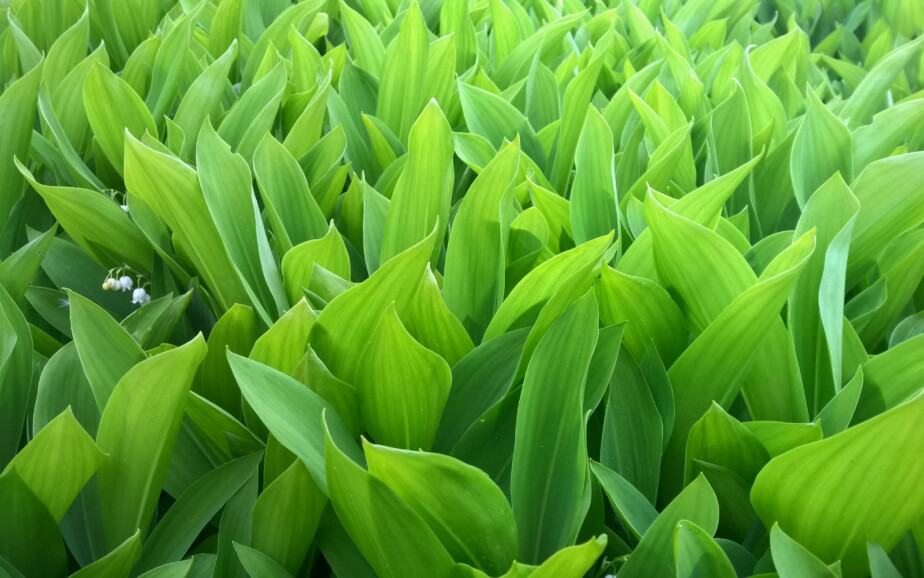
Lily of the valley (Convallaria majalis) is a popular, easy-to-grow, and very invasive plant in some areas. People grow lilies of the valley for their fragrance. But more people avoid it all together because it can easily take over large areas and native plants. Check your area if lily of the valley is recommended or not.
They easily grow in full shade or semi-shade. Heavy clay is fine and they prefer moist or wet soil.
Zones 2 to 7 can grow lily of the valley and are pollinated by some bees and flies.
Western dogwood
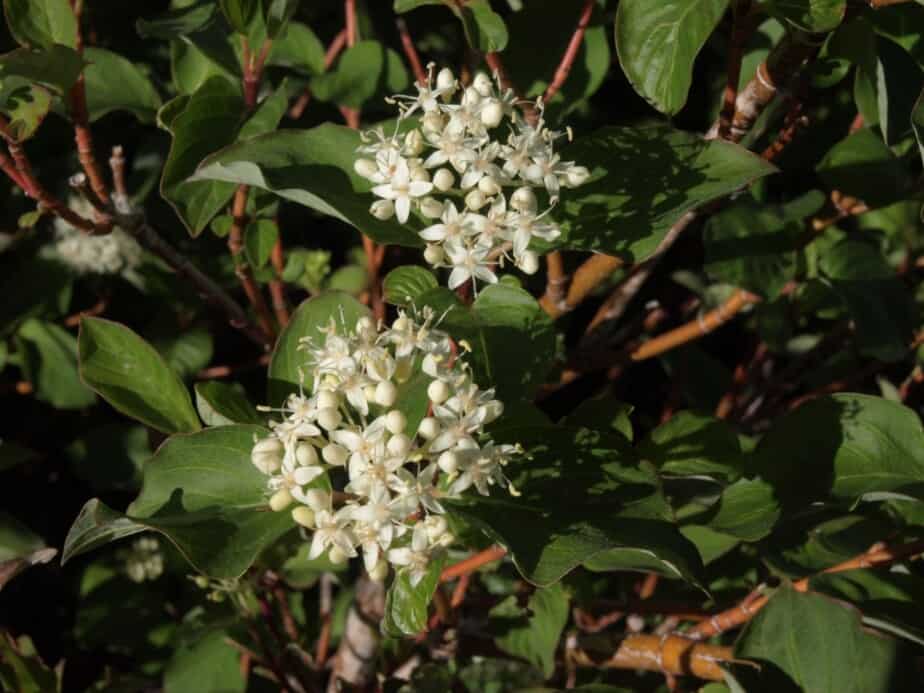
Western dogwoods or red osier dogwoods (Cornus sericea) are adapted to shade but grow faster in sun. They grow well in clay and can grow in heavy clay. Moist or wet soil is their preference in zones 2 to 7.
Dogwoods are pollinated by bees, have edible fruit, and grow useful bendy branches that are great for crafts and decor.
People grow dogwood for its beautiful ornamental look and blossoms. In fall the foliage is a gorgeous deep red.
Meadowsweet
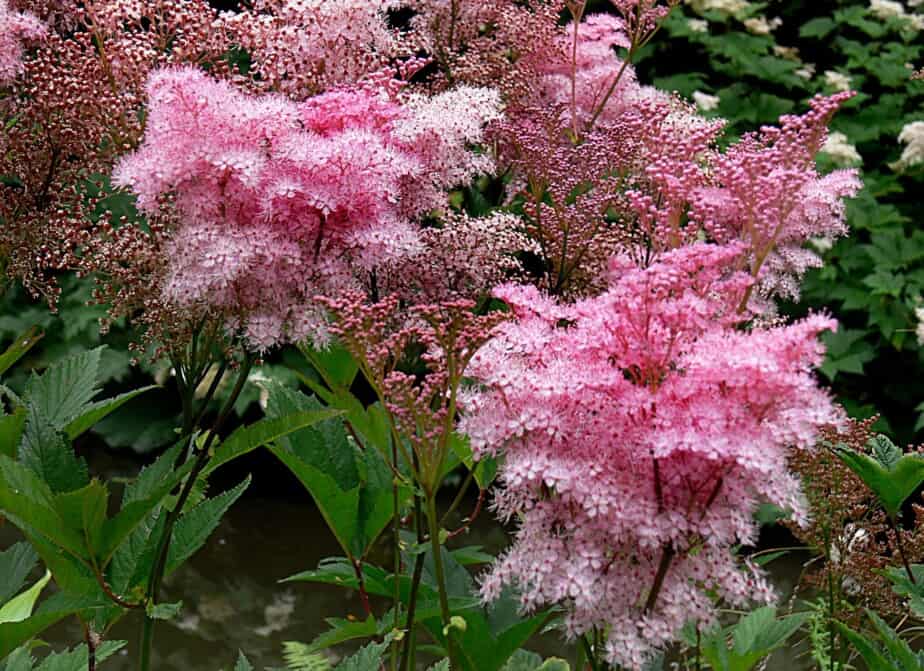
This article was originally published on foodforestliving.com. If it is now published on any other site, it was done without permission from the copyright owner.
Meadowsweet (Filipendula ulmaria) grows well in semi-shade. They can grow in clay and heavy clay with a preference for moist or wet soils.
Zones 3 to 9 can host this medicinal beauty and attracts bees. Flies and beetles also pollinate the plant while it blooms from June to August.
Indian pink
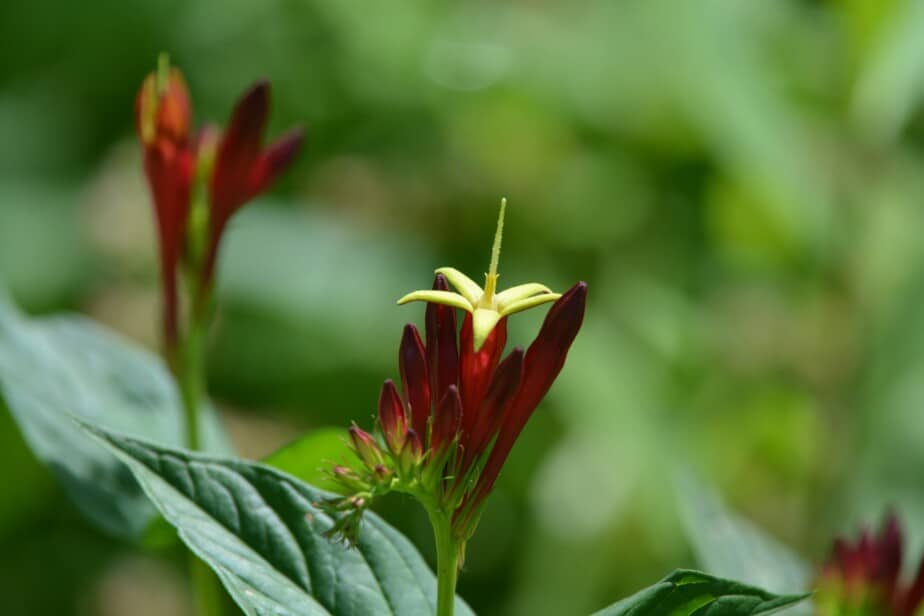
Induan pink (Spigelia marilandica) grows well in shade, and partial shade. It thrives in moist well-drained areas and tolerates wet soil and likes chalky and clay soil types.
This gorgeous flower can grow in zones 5-9 and attracts hummingbirds
English ivy
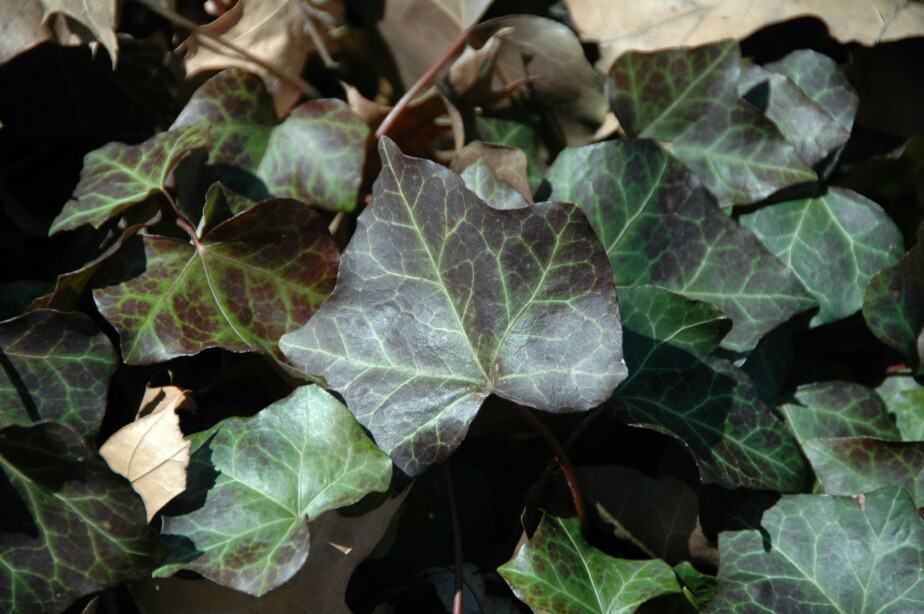
English ivy (Hedera helix) grows well in full shade, semi-shade, or no shade. A very hardy choice for zones 5-11 and grows well in clay or heavy clay. Ivy prefers moist or wet soils and can tolerate droughts.
Pollinated by bees, butterflies, moths, and flies while it flowers from October to November.
Related: Evergreens & Perennials to Improve Poor Draining Clay Soil
Swamp Hosta
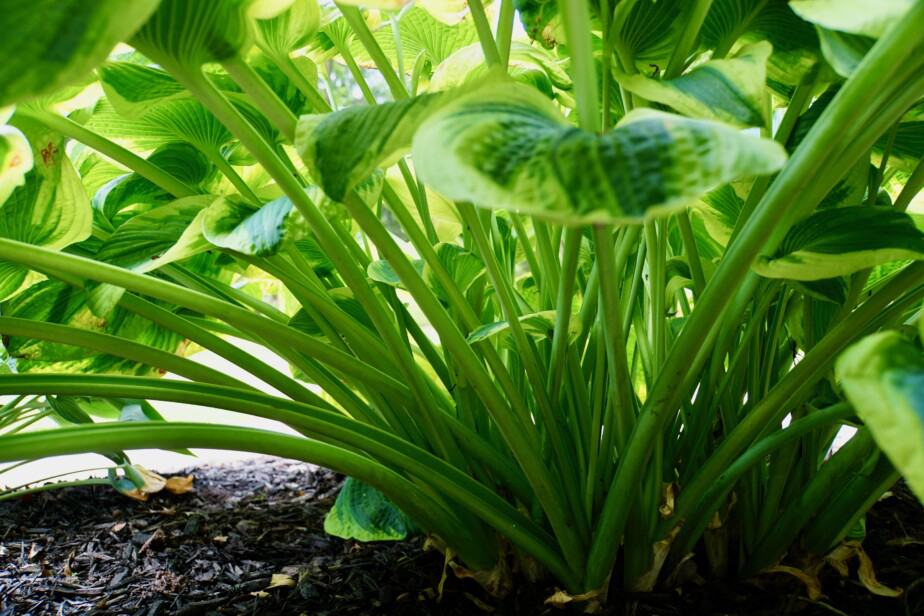
People grow swamp hostas (Hosta longissima) and hostas in general because they are very easy and gorgeous to look at. Along with a wide variety of other plants and natives, we grow them because they are edible! Young shoots taste and feel like mild asparagus, and we love asparagus!
Grow swamp hostas in zones 4-8 in semi-shade. They can grow in clay and heavy clay, and prefer moist or wet soils.
Siberian Iris or Blood Iris
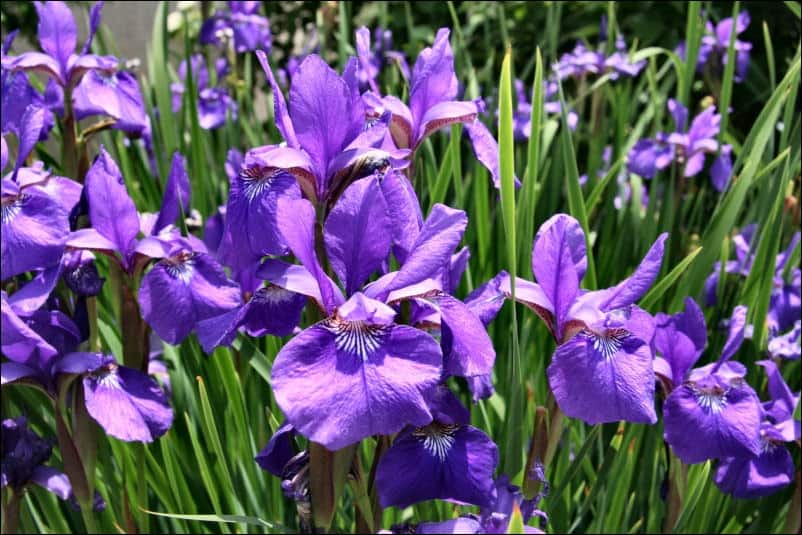
Siberian iris (Iris germanica) grows in zones 4-9 and blood iris are hardy in zones 5-9.
They both grow well in heavy clay soil and prefer moist or wet conditions. Too much moisture when dormant, however, can be damaging to their roots. Semi-shade sun is best.
They flower in June and attract butterflies and hummingbirds. People grow them (and we grow them) because they are easy and beautiful.
Asters
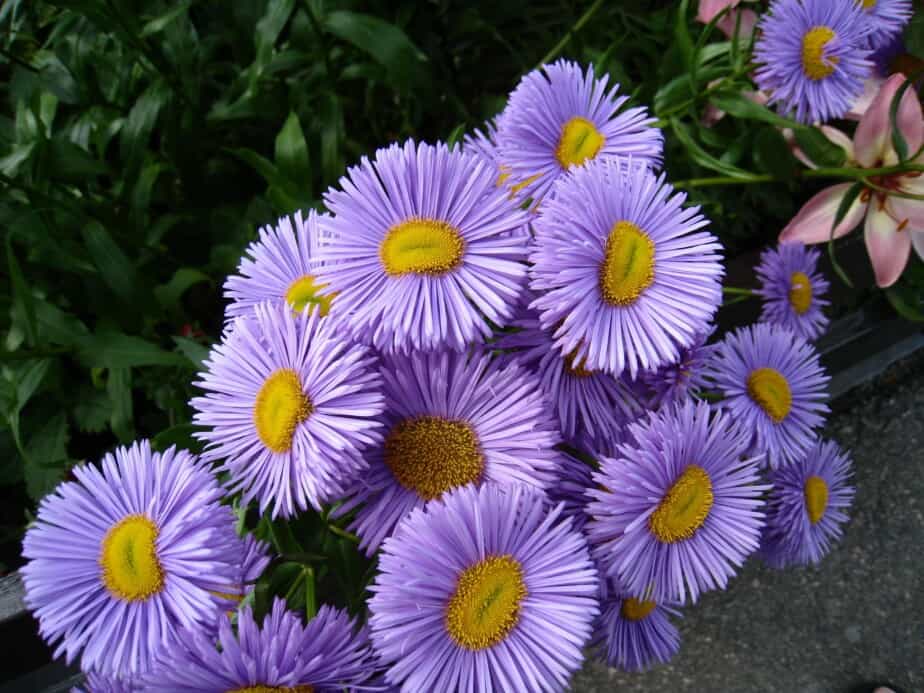
Asters (Aster) grow well in semi-shade. They prefer moist and well-drained soil but can tolerate wet periods. They grow in clay, even heavy clay!
They grow in zones 3-7 and bloom from September to October. Bees, flies, beetles, moths, and butterflies are all attracted to asters, and here are some aster seeds, and color choices.
Liverwort
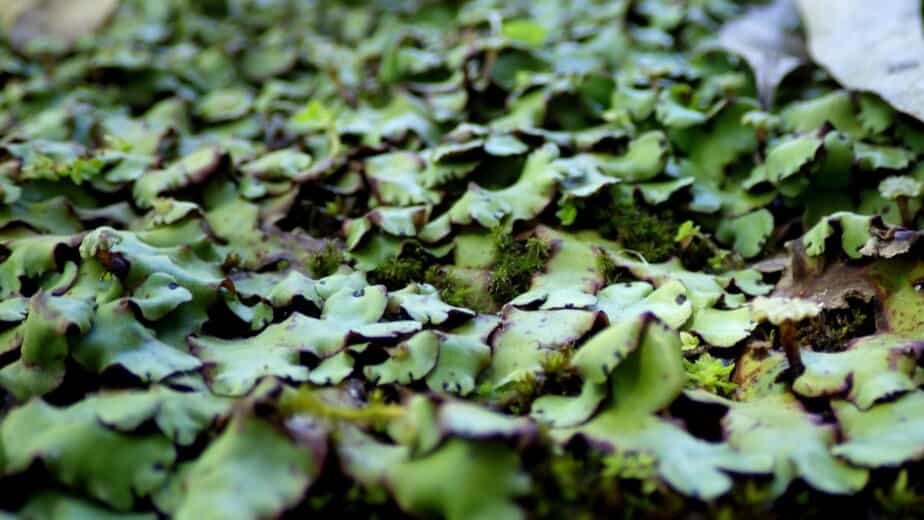
Liverwort (Marchantiophyta) thrives in shade, humidity, and moist and wet soil, and grows well in clay too! A great ground cover for wet clay soil and shade in zones 4-9. Probably the most fitting for true boggy scenarios.
Liverwort has medicinal qualities and makes a good companion to other plants and trees. Where they grow naturally indicates that the soil is compact, has steady moisture year-round, and has little air.
Water mint
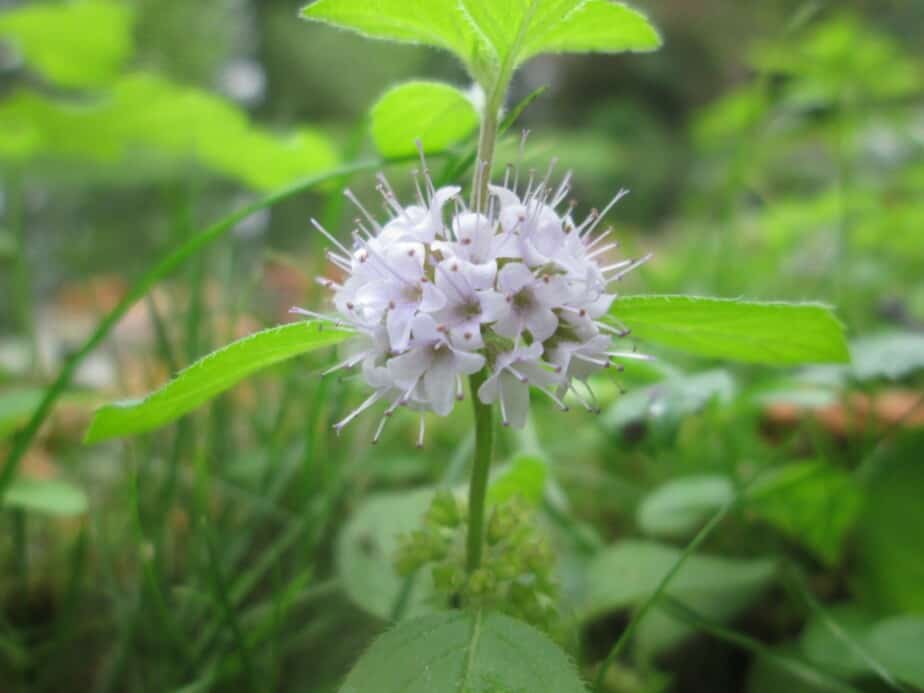
Water mint (Mentha aquatic) grows well in semi-shade and clay, It can also grow in heavy clay and prefers moist or wet soils. Water mint, hence the name also grows in the water!
Zones 5-9 welcome this delicious herb and is best harvested in summer when its potency is at its peak for tea.
See: Ideal crops for clay soil (annuals & edible perennials)
Vietnamese coriander
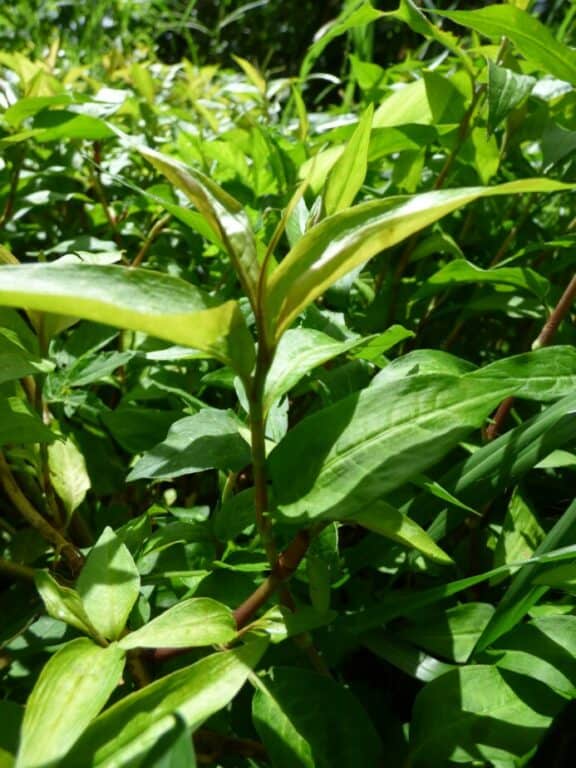
- Grows in semi-shade
- Grows in clay and heavy clay, and prefers moist or wet soil
- Zones 9-11
- Edible leaves and shoots
Vietnamese coriander grows well in semi-shade for zones 9-11. The leaves and shoots are delicious and edible and easily grown as an annual too! (worth it for the taste!)
Vietnamese coriander (Persicaria odorata) grows in clay and heavy clay, and it prefers moist or wet soils.
Conclusion
I’ve stated the soil and sunlight selections for each plant as preferences do vary.
I think it’s important to include that in a post like this, because in the past when searching for my own plants for my own environment, I found articles that would post a description about the plant that said everything except for the information I was there for. I would look into each individual plant and find myself discovering that they aren’t actually ideal for my space. They didn’t match the title of the post, so I make sure that this won’t be the case on my blog!
Many (but not all) plants on this list I’ve tried in wet areas myself, and they are known to either grow well in shade or semi-shade (as specified). If you have further needs beyond wet clay soil in shade be sure to research your top picks for other factors such as pH and amend your soil accordingly!
Up Next:
- How to Grow a Food Forest for Free and Cheap
- 5 Phases to Create Well-Drained Clay Soil for Growing Food
Recent Posts
There’s no shortage of full-sun ground covers for zone 4 climates! Each plant in this list can withstand the frigid temperatures and also enjoy the hot sun in summer. Full sun means that a plant...
There's no shortage of full sun ground covers, not even in zone 3! Zone 3 climates offer hot but short-lived summers and very cold winters. So each plant in this list can withstand the frigid...

